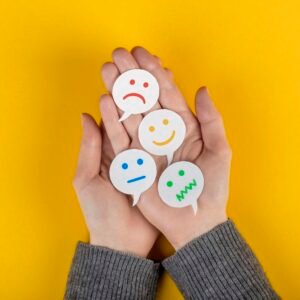
How SEL Builds Positive Relationships in Classrooms
The Role of SEL in Building Positive Relationships in Classrooms Home Blog The Failed System: Why Traditional Schooling Is Outdated and How SEL Can Transform

Schools today are no longer just places for math, science, and history but environments where the young minds and hearts develop. It is for this reason that SEL is finding its way into behavior management programs; it involves teaching students how to understand and manage emotions, build strong relationships, and make responsible decisions. With proper behavior management strategies and effective strategies, it blends a very powerful combination which allows the student to not only perform well academically but also socially.
This approach not only discourages bad behavior but instead arms students with life skills. Imagine a classroom with kids who resolve conflicts peaceably, who can truly hear each other’s thinking, and who look out for one another. This is the power of SEL! Let’s dive deeper into how SEL and behavior management programs can work together to give students the power to succeed.
SEL plays a crucial role in shaping student behavior and supporting their growth. It is not just about addressing immediate behavioral challenges but also about developing lifelong behavioral skills.
SEL teaches students:
The integration of SEL in behavior management programs brings an all-rounded approach that can help students develop emotionally.
The integration of SEL in behavior management programs brings an all-rounded approach that can help students develop emotionally.
Positive behavior interventions: The SEL-based approaches are for proactive solutions instead of punishments.
Emotional intelligence at school: The students who have high emotional intelligence often perform better in academics as well as in their social lives.
Behavioral development: SEL helps the children become self-aware and self-controlled and decreases disruptive behaviors.
Better relationships: A focus on SEL encourages cooperation among students, teachers, and parents.
Combining SEL and behavior management results in actual, measurable changes within schools. Fewer fights on the playground and better test scores are among them.
How SEL benefits classrooms:
Builds emotional intelligence: Students are able to recognize their emotions and deal with them appropriately.
Improves classroom behavior: With SEL, the students are more attentive and considerate.
Promotes responsible decision-making: SEL helps kids think before they act and think about their actions and consequences.
Promotes general well-being: SEL is focused on the mental health of students and teachers and reduces stress in school
Students with SEL training perform better in tests by up to 11%.
Teachers also feel more supported, so the burnout rate is lower.
Let’s get practical! The integration of SEL into behavior management is easier than it sounds. Here are some tested and proven strategies educators can use:
Restorative practices: Encourage students to resolve conflicts through dialogue and understanding.
Positive reinforcement: Reward good behavior with praise or incentives, making students feel valued and recognised.
SEL activities: Games, role-playing, and discussions on empathy, communication, and collaboration promote development of social and emotional development.
Discipline alternatives: Instead of punishment, use journaling or one-on-one counseling to promote reinforcement.
After-school programs: Schools should implement dedicated SEL curricula for after-school programs to address behavior management and emotional growth.
Empathy exercises: Students are placed in other people’s shoes to understand perspectives.
Mindfulness sessions: Educate students on breathing techniques to help them deal with pressure and concentrate better.
Implement game-based learning: Use educational games to teach empathy, collaboration, and emotional regulation, team work
Social-Emotional Learning is fundamental to the behavior management program in schools and must transform these schools into supportive, thriving communities that enable all learners to acquire tools for success. Social-Emotional Learning will help learners to better address challenges, make better choices, and build relationships that enhance their learning positively while working hard to promote emotional intelligence and empathy.
SEL encourage the students to possess the right emotional and social skill demands.
Undeniably, it will reduce disruptive behaviors that may serve to distract children from focusing upon the learning process, allowing for a peaceful and calm environment in the classroom. Several of the best Social and Emotional Learning (SEL) evidence-based strategies are quite easy and straightforward to use, including restorative practices and game-based learning as some of the best ideas. However, the compelling evidence from real-world applications depicts SEL as significantly enhancing school climates and academic accomplishment.
A Call to Action requires schools to make serious concerted efforts to adopt SEL into school behavior management programs. All in all, such embedding will benefit not only learners but also instructors through promised SEL curricula, after-school programs, or even classroom exercise.
If you’re ready to transform classroom dynamics and empower student success, book a demo at tomoclub.org or reach out to us at info@tomoed.co. Let’s create positive change together!

The Role of SEL in Building Positive Relationships in Classrooms Home Blog The Failed System: Why Traditional Schooling Is Outdated and How SEL Can Transform

Explore how AI is transforming K-12 education through personalized learning, smarter tools, and innovative approaches to enhance teaching and student success.

Discover how Social Emotional Learning (SEL) empowers students to manage emotions, build strong relationships, and make responsible decisions for lifelong success.

Discover simple stress management techniques for educators to improve well-being, reduce burnout, and create a positive classroom environment.
Explore insightful articles and updates that keep you abreast of the evolving landscape of education, ensuring you stay ahead in your educational journey.